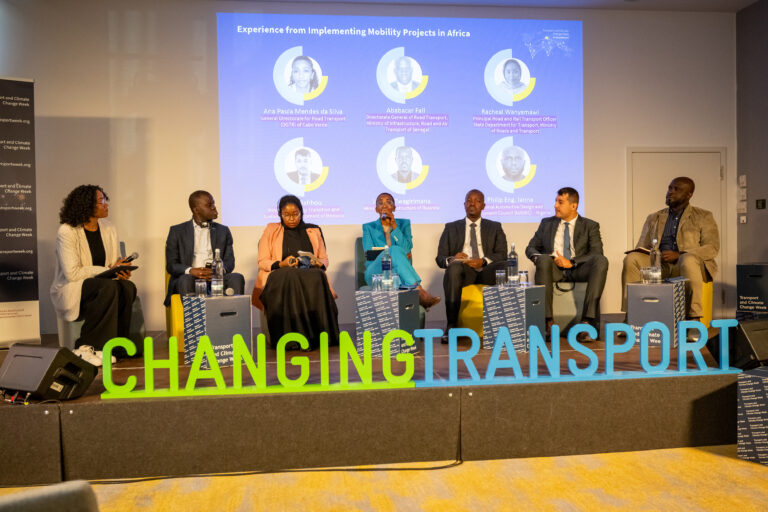Agility drives innovation at the best companies to work for – Valor International

Corporate Performance Analysis: Innovation, Decent Work, and Sustainable Development Goals
Introduction
An analysis of the 2025 Great Place to Work (GPTW) ranking, conducted in partnership with Época Negócios and Valor, reveals a strong correlation between a company’s capacity for innovation and its overall success. This report reframes these findings through the lens of the United Nations Sustainable Development Goals (SDGs), evaluating corporate performance based on contributions to SDG 8 (Decent Work and Economic Growth), SDG 9 (Industry, Innovation, and Infrastructure), SDG 5 (Gender Equality), and SDG 10 (Reduced Inequalities).
Innovation as a Catalyst for SDG 9: Industry, Innovation, and Infrastructure
The Innovation Velocity Index (IVR) as a Metric for Sustainable Progress
The IVR measures an organization’s ability to adapt and generate creative solutions, a key component of SDG 9. The data indicates a significant disparity between companies recognized for their workplace culture and those that are not.
- Friction Stage: Characterized by stalled innovation, this stage includes 66% of unranked companies versus only 36% of GPTW-ranked companies.
- Functional Stage: In this phase, where ideas are generated but implementation is slow, 40% of ranked companies are present, compared to 27% of their unranked counterparts.
- Accelerated Stage: Representing consistent and rapid innovation, this level was achieved by 24% of ranked companies but only 7% of unranked organizations.
Economic Growth and Corporate Responsibility (SDG 8)
Companies that excel in innovation demonstrate superior financial performance, directly contributing to the economic growth targets of SDG 8. The 40 companies in the accelerated stage reported an average revenue increase of 25% between 2023 and 2024. This performance significantly outpaces the 14% average growth across all 175 ranked firms and Brazil’s national GDP growth of 3.4%, highlighting how a focus on innovation and employee well-being can drive sustainable economic development.
Achieving SDG 8 and SDG 3: Decent Work and Good Health & Well-being
Leadership’s Role in Fostering Sustainable Work Environments
Achieving a high IVR is dependent on proactive leadership that cultivates a culture of psychological safety, where mistakes are viewed as part of the innovation process. This approach is fundamental to providing decent work (SDG 8). Leaders who penalize failure stifle innovation and create work environments detrimental to employee well-being (SDG 3).
Barriers to Innovation and Decent Work
The survey identified several key obstacles preventing companies from fostering innovative and healthy work environments, thereby hindering progress on SDGs 3 and 8.
- Mental Health Crises: Widespread mental health issues directly impact creativity and productivity, undermining SDG 3.
- Employee Disengagement: A disconnect between operational staff and strategic goals limits collaborative innovation.
- Unsustainable Workloads: Excessive work without adequate resources or recognition violates the principles of decent work outlined in SDG 8.
- Hierarchical Barriers: A lack of access to senior leadership and rigid, bureaucratic management practices stifle employee participation and creativity.
Addressing Systemic Failures in SDG 5 (Gender Equality) and SDG 10 (Reduced Inequalities)
Persistent Gender Gaps in the Workforce
Despite corporate initiatives, significant progress toward SDG 5 remains elusive. Data from the 175 ranked organizations, employing over 780,000 people, reveals continued underrepresentation of women at all corporate levels.
- Overall Workforce: Women comprise 43% of employees.
- Leadership Positions: Women hold only 32% of leadership roles.
- Chief Executive Officers: A mere 10% of CEO positions are held by women.
Challenges in Reducing Inequalities (SDG 10)
The findings highlight a failure to create inclusive workplaces for various demographic groups, indicating a systemic challenge to achieving SDG 10.
- Age Diversity: Professionals aged 55 and older represent only 5% of the workforce, showing no improvement from 2023 and indicating persistent age-based inequality.
- LGBT+ Representation: While the 10% of employees identifying as LGBT+ is above the national average of 1.8%, it underscores the need for more inclusive corporate policies.
- Racial and Ethnic Disparity: Black and Mixed-Race professionals account for 38% of employees in ranked companies, a figure significantly below their 56% representation in Brazil’s national population, exposing a major gap in racial equity.
Methodology and Conclusion
Survey and Ranking Overview
The 29th edition of the GPTW Brazil ranking involved over 5,000 registered companies, with 3,000 meeting the criteria to compete for 175 positions. A key methodological change this year was the merger of the National and Multinational categories for companies with 100 to 999 employees to align with global standards.
Conclusion
While leading companies demonstrate a strong capacity for driving innovation and economic growth in alignment with SDGs 8 and 9, the report underscores critical deficiencies in achieving social sustainability. The persistent inequalities related to gender, age, and race (SDGs 5 and 10) and challenges to employee well-being (SDG 3) indicate that a holistic and integrated approach is necessary for businesses to contribute meaningfully to the full spectrum of Sustainable Development Goals.
Analysis of Sustainable Development Goals in the Article
1. Which SDGs are addressed or connected to the issues highlighted in the article?
- SDG 3: Good Health and Well-being: The article mentions that “mental health issues that affect creativity” and “excessive workloads” are key challenges for companies. This directly relates to promoting mental health and well-being in the workplace.
- SDG 5: Gender Equality: The article provides specific data on the underrepresentation of women in the workforce, particularly in leadership and CEO positions, highlighting persistent challenges in achieving gender equality in the corporate environment.
- SDG 8: Decent Work and Economic Growth: The core theme of the article revolves around creating a “positive work environment” to foster innovation, which leads to higher revenue growth and stronger financial performance. It discusses decent work by highlighting issues like workload, mental health, and non-discriminatory practices. The connection between innovation and economic productivity is a central point.
- SDG 9: Industry, Innovation, and Infrastructure: The article extensively discusses the importance of innovation, using the “Innovation Speed Index (IVR)” to measure a company’s ability to adapt and create. It emphasizes how fostering a culture of innovation leads to better market performance and economic growth.
- SDG 10: Reduced Inequalities: The article explicitly points out inequalities within companies based on age, gender, sexual orientation, and race. It provides statistics showing the underrepresentation of professionals aged 55 or older, women in leadership, and Black and Mixed-Race individuals compared to the national population, directly addressing the issue of inequality in the workplace.
2. What specific targets under those SDGs can be identified based on the article’s content?
- Target 3.4: “By 2030, reduce by one third premature mortality from non-communicable diseases through prevention and treatment and promote mental health and well-being.” The article’s identification of “mental health issues” and “excessive workloads” as significant challenges for employees connects directly to the promotion of mental health and well-being in the workplace.
- Target 5.5: “Ensure women’s full and effective participation and equal opportunities for leadership at all levels of decision-making in political, economic and public life.” This target is directly addressed by the article’s data showing that women constitute only “32% of leadership roles, and just 10% of CEO positions,” indicating a lack of equal opportunities for leadership.
- Target 8.2: “Achieve higher levels of economic productivity through diversification, technological upgrading and innovation…” The article links a high “Innovation Speed Index (IVR)” to significant revenue growth (25% for top innovators), demonstrating how innovation directly contributes to economic productivity.
- Target 8.5: “By 2030, achieve full and productive employment and decent work for all women and men… and equal pay for work of equal value.” The article touches upon this by highlighting the underrepresentation of various demographic groups, such as older workers (5% are 55+), women (43% of employees), and racial minorities (38% Black and Mixed-Race vs. 56% of the population), suggesting that full and productive employment is not yet achieved for all.
- Target 8.8: “Protect labour rights and promote safe and secure working environments for all workers…” The concept of a “positive work environment” is central to the Great Place to Work ranking. The article contrasts this with environments characterized by a “culture of fear,” “excessive workloads,” and “poor communication,” which are detrimental to a safe and secure working environment.
- Target 9.5: “Enhance scientific research, upgrade the technological capabilities of industrial sectors in all countries… encouraging innovation…” The article’s focus on the “Innovation Speed Index” and the characteristics of companies in the “accelerated stage” directly relates to upgrading technological capabilities and encouraging innovation within the private sector.
- Target 10.2: “By 2030, empower and promote the social, economic and political inclusion of all, irrespective of age, sex, disability, race, ethnicity, origin, religion or economic or other status.” This is a central theme in the latter part of the article, which provides specific data points on the inclusion (or lack thereof) of individuals based on age (5% are 55+), gender (women are a minority in leadership), sexual orientation (10% identify as LGBT+), and race (Black and Mixed-Race professionals are underrepresented).
3. Are there any indicators mentioned or implied in the article that can be used to measure progress towards the identified targets?
- Innovation Speed Index (IVR): This is a direct indicator used in the article to measure a company’s innovation capacity, relevant to SDG 8.2 and SDG 9.5. The classification into “friction,” “functional,” and “accelerated” stages provides a clear metric.
- Average Revenue Growth: The article uses this financial metric (e.g., “average revenue increase of 25%” for top innovators) as an indicator of economic productivity resulting from a positive and innovative work environment, relevant to SDG 8.2.
- Percentage of Women in Leadership and CEO Roles: The specific figures “32% of leadership roles” and “10% of CEO positions” are direct indicators for measuring progress towards Target 5.5 on gender equality in economic decision-making.
- Workforce Demographic Representation: The article provides several quantitative indicators for measuring inclusion and equality (Target 10.2 and 8.5):
- Percentage of employees aged 55 or older (5%).
- Percentage of employees identifying as LGBT+ (10%).
- Percentage of employees who are Black and Mixed-Race (38%) and its comparison to the national population percentage (56%).
- Prevalence of Workplace Challenges: While not presented as a number, the identification of “mental health issues,” “excessive workloads,” and “poor communication” as key challenges implies that their prevalence could be surveyed and used as a negative indicator for workplace well-being (Target 3.4) and decent work (Target 8.8).
4. Summary Table of SDGs, Targets, and Indicators
| SDGs | Targets | Indicators |
|---|---|---|
| SDG 3: Good Health and Well-being | 3.4 Promote mental health and well-being. | Prevalence of “mental health issues” and “excessive workloads” as challenges affecting creativity. |
| SDG 5: Gender Equality | 5.5 Ensure women’s full participation and equal opportunities for leadership. |
|
| SDG 8: Decent Work and Economic Growth | 8.2 Achieve higher levels of economic productivity through innovation.
8.5 Achieve full and productive employment and decent work for all. 8.8 Promote safe and secure working environments. |
|
| SDG 9: Industry, Innovation, and Infrastructure | 9.5 Enhance research and upgrade technological capabilities, encouraging innovation. |
|
| SDG 10: Reduced Inequalities | 10.2 Promote the social and economic inclusion of all, irrespective of age, sex, race, etc. |
|
Source: valorinternational.globo.com
What is Your Reaction?
 Like
0
Like
0
 Dislike
0
Dislike
0
 Love
0
Love
0
 Funny
0
Funny
0
 Angry
0
Angry
0
 Sad
0
Sad
0
 Wow
0
Wow
0


















































.jpg.webp?itok=0ZsAnae9#)



/environment-climate-change-and-health-(ech)/water-sanitation-hygiene-and-health-(wsh)/landfill-tuvalu-36092.tmb-1200v.jpg?sfvrsn=5c21fe40_1#)



















